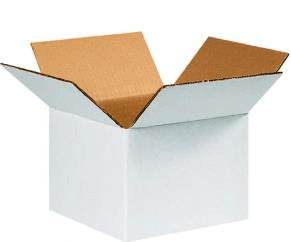FiberLean MFC: Making White Top Liner with Less Pulp

The success of FiberLean® MFC in White Top Liner (WTL) application is clear and has also been made public by an early adopter. Microfibrillated Cellulose provides a strength boost to allow significantly higher levels of filler to be used in the white ply.
The combination of more filler and Microfibrillated Cellulose increases the opacity of the white ply, making this cover the dark base much better. Instead of making a Whiter Top Liner, it is generally more attractive to reach the specified brightness at much lower basis weight. Increasing the use of filler and reducing the basis weight is an attractive combination for manufacturers of WTL as the white ply is typically much higher in cost and usually weaker than the brown/grey base. By moving weight from the expensive and relatively weak white layer to the lower cost and higher strength base liner, it is possible to make a better and cheaper product.
FiberLean Technologies explored the basics of this application on a pilot machine a few years ago already. This trial focused on a model white layer produced as a single ply sheet. By varying filler loading, Microfibrillated Cellulose addition and basis weight it was possible to arrive at very similar absolute tensile strength and opacity with substantially different formulations.
We started out with a mill reference formulation with all HW pulp and 8% filler. To reach the targeted 1,5 kN/m of tensile strength and 84% opacity, this paper needed to be made at 63 g/m2. When adding 2% MFC and increasing filler loading to 17%, it was possible to reduce basis weight to 53 g/m2 and still maintain the same strength and opacity. Pushing further, we went to 4% MFC and 21% filler loading. Now it was possible to reach the same quality at only 48 g/m2.
The combined effect of reducing basis weight and increasing filler loading meant that the white pulp need was reduced from 58 g/m2 to a mere 38 g/m2, and this includes white pulp being used to make Microfibrillated Cellulose. Quite a substantial reduction in white pulp is needed to make the same quality.
With this “double whammy effect” it is not difficult to justify the cost of converting a small side stream of the white pulp to Microfibrillated Cellulose. In fact, economically it is very attractive and we expect this application to grow rapidly.
Request for more information
To make an enquiry please complete the form below.
